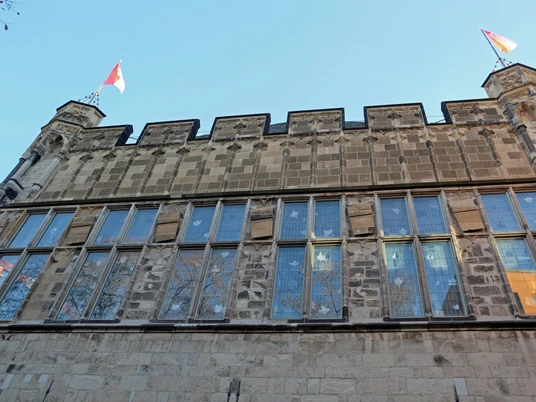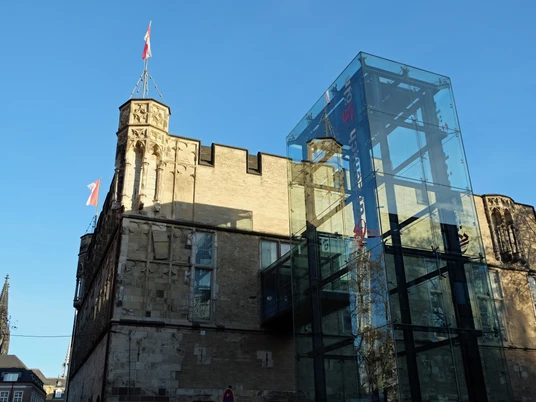The Gürzenich is Cologne's festival and event hall and is also known as the "parlor" of the city of Cologne. Operated by Koelncongress GmbH, cultural, congress and carnival events are held in this traditional building. In this respect, the building still fulfills the purpose that was the original intention when it was built.
In the course of the late 19th century, further expansion and conversion measures were carried out to accommodate the increasing use by various events and corporations (including the Cologne Stock Exchange).
Its origins and significance
The late Gothic festival hall building was erected between 1441 and 1447 on the former grounds of the von Gürzenich family to host large, prestigious city festivities. The Gürzenich was also made available to aristocrats and upper-class citizens for celebrations. The prestigious building also served the Roman-German kings as a place to hold receptions and imperial diets and thus enjoyed far-reaching significance. However, the Electors' Day of 1531 was the last magnificent event to be held here before the building lost its relevance. This development went hand in hand with that of Cologne, which was less at the center of international and national events at the beginning of the early modern period. The building was subsequently used as a department store until it experienced a revival in the 19th century.The path to modernity: revival of the Gürzenich in the 19th century
Cologne was no longer a free imperial city, but the largest city in the Prussian Rhine province on its way to modernity. Celebrating large public festivities and banquets became socially acceptable again and the Gürzenich regained its original function. Even then, carnival events were among the most popular events, such as the masked ball, which was celebrated there in 1822. But political events were also part of the program, as illustrated by the general assembly of the Cologne Workers' Association in 1848 or the largest revolutionary event in Cologne in 1849. Music also played an important role. The Cologne Concert Society performed its concerts in the ballroom from 1857. The resulting Gürzenich Concerts by the Gürzenich Choir and Gürzenich Orchestra are still a mainstay of the Cologne Philharmonic's program today.In the course of the late 19th century, further expansion and conversion measures were carried out to accommodate the increasing use by various events and corporations (including the Cologne Stock Exchange).
Destruction and reparation: the Gürzenich in the 20th century
As for the city itself, the Second World War and the resulting destruction represented a striking break for the Gürzenich. However, like the Romanesque churches and the historic town hall, the Gürzenich was rebuilt, as it was considered a building that was relevant to the history and identity of the city. In keeping with the spirit of the times, the façade was rebuilt in its original, late Gothic style, while the interior was designed in an elegant, simple post-war modernist style of the 1950s. Architects Karl Brand and Rudolf Schwarz thus succeeded in building a bridge between the past and the future. Since then, the Gürzenich has once again become one of the top addresses for events in the cathedral city, whether for private or public occasions. Of course, the most famous image of the Gürzenich in Germany is the carnival sessions broadcast by WDR.Useful Information
Eligibility
Bad Weather Offer
Suitable for any weather
for individual guests
Payment methods
no entrance possible
Parking facilities
The Heumarkt stop is less than 250 meters from the Gürzenich and is well connected to the inner-city rail network by tram lines 1, 5, 7 and 9.
Nearby

